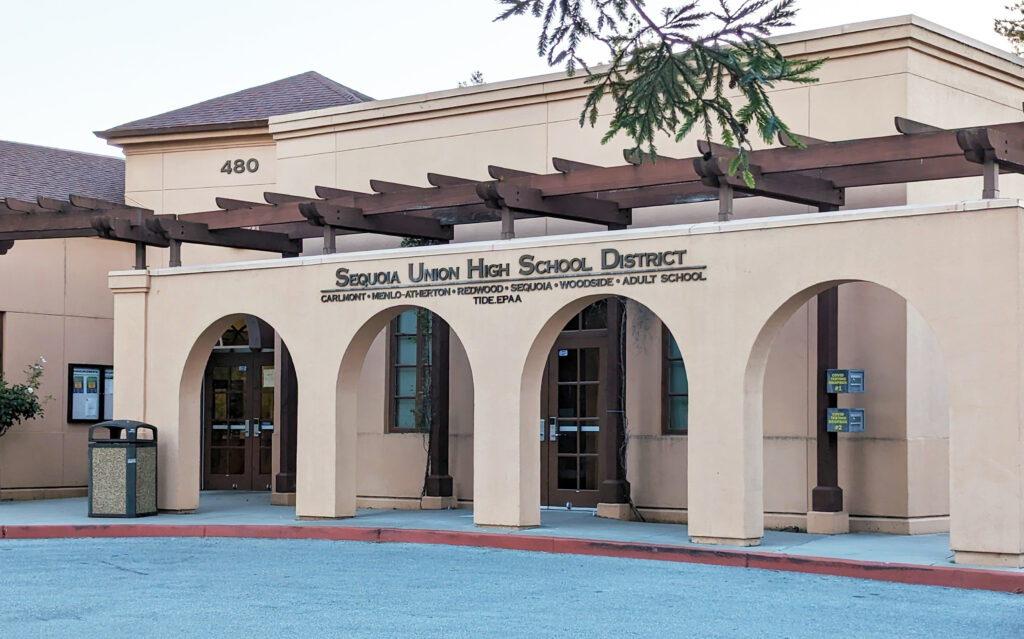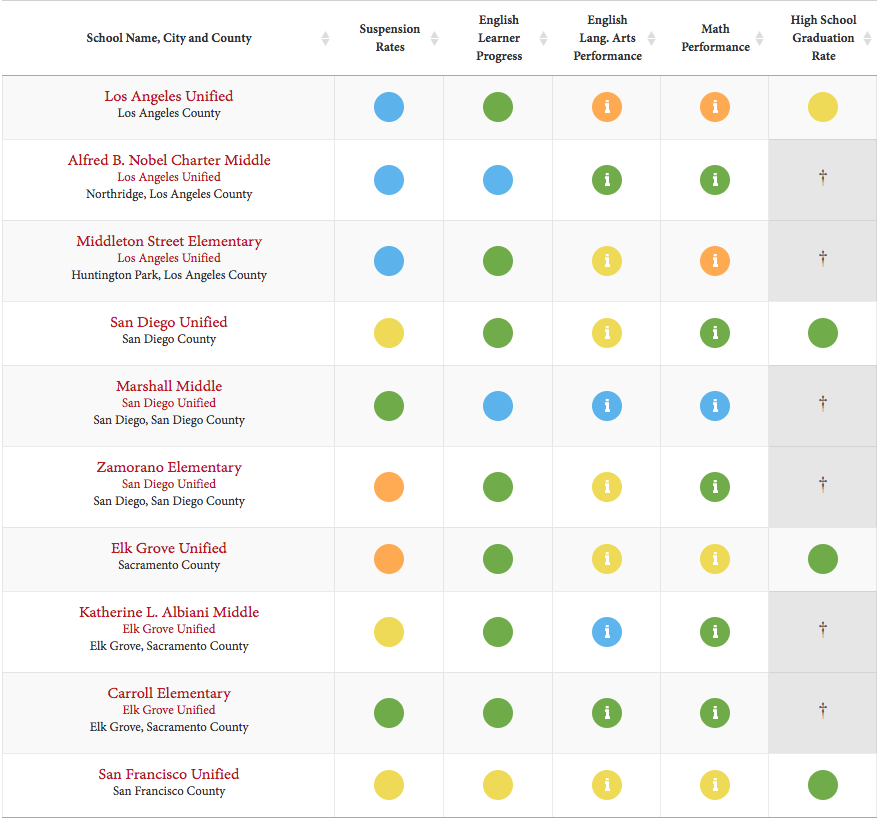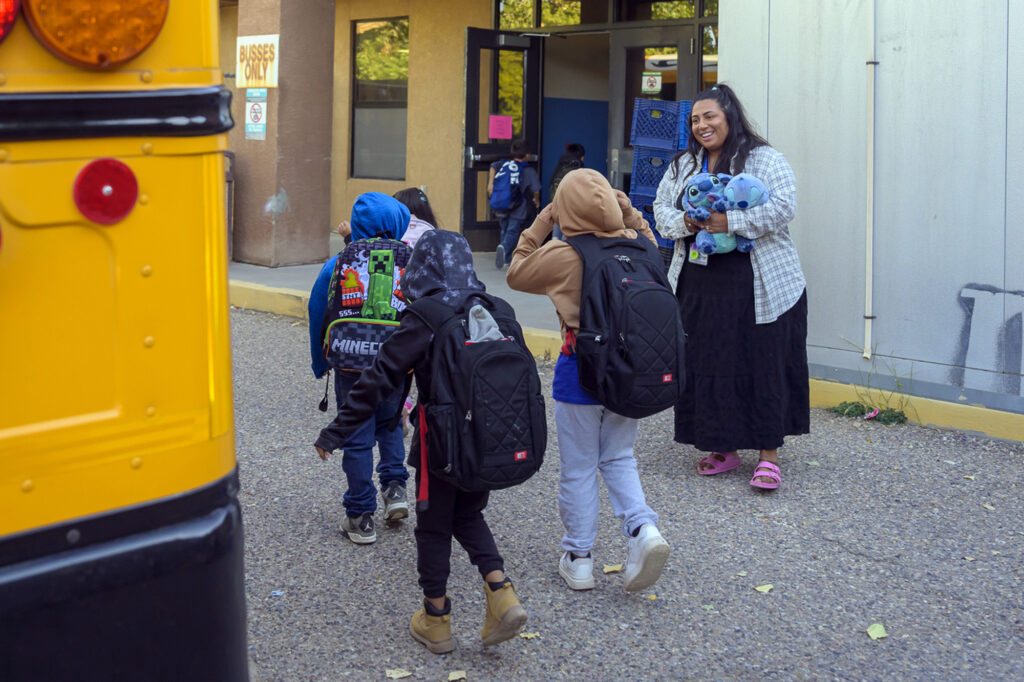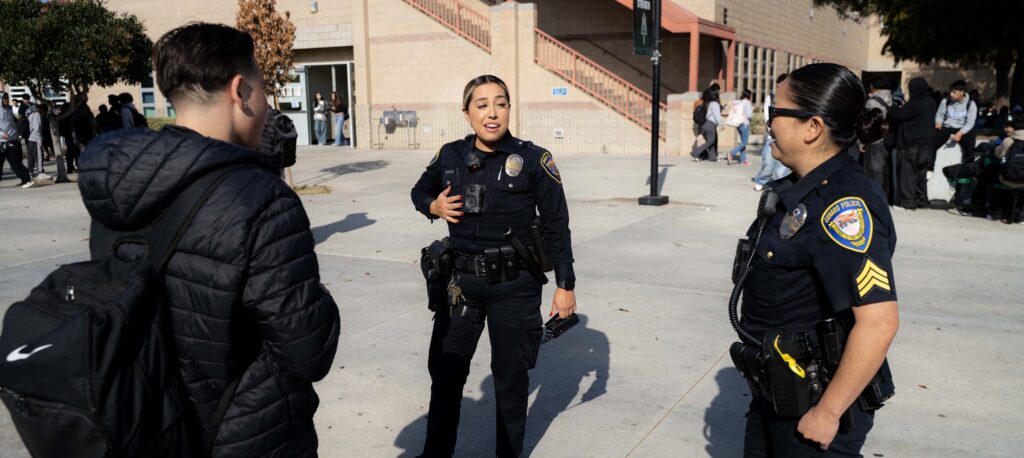
A poster at Oakland High School encourages 16- and 17-year-olds to vote in the school board election. These posters are displayed throughout the campus.
Credit: Andrew Reed / EdSource
While the upcoming presidential election crowds voters’ minds, a new demographic will be casting their ballots for the first time this November. Both the cities of Berkeley and Oakland announced in August that 16 and 17-year-old constituents are now eligible to vote in local school board races.
Berkeley voters approved Measure Y in 2016 by just over 70% of the vote. In Oakland, Measure QQ — which indicates similar youth voting stipulations as its Berkeley counterpart — was approved in 2020 with 68% of the vote.
Years after the approval, continued community advocacy from organizations like Oakland Kids First has helped push the Alameda County Registrar of Voters to finalize a system to register 16- and 17-year-old voters.
At a school board candidate forum on Oct. 22 hosted by Fremont High School and organized by Oakland Youth Vote, students, teachers, administrators, organizers and school board candidates from Oakland Unified School District gathered to register voters and learn more about the candidates running in local school board contests.
Nearly all the school board candidates from districts 1, 3, 5 and 7 were present, and each was given a chance to introduce themselves and discuss their priorities and platforms within a time-limited format moderated by students from Fremont High School.
After the student moderators and administrators gave introductions and explanations on registration, voting and the school board, the moderators emphasized the importance of voting in making student voices heard. They cited the efforts of community organizations like the Oakland Youth Commission and Californians for Justice in their success.

“Your vote has the power to bring us closer to your vision and make your dream a reality,” said a student moderator. “This makes history, but it was only possible because we have been fighting for the last five years. We have earned this — it is a right.”
Forum presenters highlighted what they considered the most important issues to Oakland students — access to health and wellness, community-centered schools, and essential life skills — all of which outlined concerns from over 1,400 student survey forms gathered from across the district.
The remainder of the forum consisted of the student moderators asking the candidates questions about how they plan to represent student concerns for equitable resource distribution, holistic mental health and wellness checks, school safety and budget deficits.
Oakland Tech senior Ariana Astorga Vega and sophomore Amina Tongun, both members of the All City Council, or the ACC, attended the forum and emphasized the importance of students using their newfound voting rights, which are limited to the Oakland Unified School District (OUSD board races. The ACC is made up of 11 peer-elected high school students to represent student concerns to OUSD.
“Even though I can’t vote yet because I have not turned 16, I’m here as a part of the ACC to support the local youth vote,” Tongun said. “I feel like it’s really special because we get to vote as young people and our voices are being heard. That’s one of the main reasons that I joined the ACC, because I really believe in advocating for young people and helping their voices be heard.”
Vega echoed Tongun’s opinion about the new voting rights, and her appreciation for being able to be “a part of that change.”
The two have also been involved in the ACC’s efforts to encourage youth voting, including streamlining social media posts about it and putting up fliers reading “Breaking News: 16-17 year-olds can now vote!” across district’s schools.
Although they have run into obstacles, like student disinterest due to not knowing how to vote and what the implications are, Vega and Tongun hope their community’s continued efforts to raise awareness and education will motivate their peers to take action.
Maya Rapier, an organizer with Oakland Kids First, who also attended the forum, has been committed to the purpose. By helping distribute voter registration forms, spread awareness about the forum, and even implement a new voting curriculum into OUSD schools, Rapier said the organization has helped the district register over 1,000 student voters.
“I genuinely feel like Oakland is such a beautiful place with such a beautiful community of voters who deserve so much, but there’s a history here of students being underserved and under-resourced,” Rapier said. “Students know their own experiences best, so for them to be able to be in the schools real-time, notice an issue, take that to the representative, and know that they have the power to bring attention to it, means a lot.”
Rapier added, “I’m a former student of OUSD, and I’m really inspired by the students here and the work that they’ve been doing.”
Fremont High School Principal Nidya Baez echoed these sentiments, expressing that her student body “feels responsible” for representing families and community members who cannot vote. She has worked to help “eliminate (obstacles like) the fear factor” by partnering with local coalitions to organize class presentations, lunchtime tabling and events like the candidate forum.
At Berkeley High School (BHS), students, with faculty help, have spearheaded youth voter registration and education. On Oct. 8, students from the BHS Civic Leaders Club organized a school board candidate forum with assistance from John Villavicencio, the director of student activities. The students invited the candidates to speak at the high school and allowed time for students to ask questions.
Villavicencio added that other BHS student organizations have led efforts in encouraging students to register to vote and done the groundwork by taking mail-in voter registration forms to classrooms. He also noted efforts from Josh Daniels, a former member of both the Oakland and Berkeley unified school district boards, who organized a weekly Zoom call between student leaders, student organizations and nonprofits in support of the youth vote to discuss efforts in their respective school districts.
During one weekly meeting, Oakland Youth Vote shared a curriculum members had put together detailing what the school board does, introducing the OUSD school board, emphasizing the importance of youth voting and assisting in registering students to vote.
After hearing about the curriculum Oakland Youth Vote created, Villavicencio encouraged Berkeley to create something similar. BHS teacher librarian Allyson Bogie offered to help, and created a shortened two-day curriculum tailored to Berkeley Unified. After review from the superintendent’s office, student leaders, teachers and administrators, the curriculum was shared with teachers who could use it in their classrooms.
“I wanted to make sure any teachers who wanted a tool to talk about youth voting, and getting kids registered, and the history of it, had something really easy to use,” Bogie said. “I believe it’s important for kids to vote, and I want to support the teachers, and that’s part of my role as a librarian.”
According to Villavicencio, there have been several hurdles to overcome in convincing students to register, and to understand why this opportunity is special. Some students did not know their own Social Security numbers, complicating the registration process, while others have never heard of the school board or don’t know what the school board does, making it difficult to teach students about the impact of their vote.
Villavicencio said they could “easily reach 1,000 pre-registration” out of about 1,800 potential BHS students who could register to vote. As of Oct. 22, 491 students were registered, leaving him “slightly disappointed,” he said.
“(Some students) are very passionate about activism and also engaging in the community,” Villavicencio said, but the overall sentiment is “lukewarm.” Bogie noted that she doesn’t think students view it negatively but has noticed a lot of students who also “aren’t that interested.”
Looking forward, Bogie hopes to see “continuing student momentum” for future elections.
“It’s commendable, what’s being done,” Villavicencio said. “And it’s crazy to say that there could be a lot more done.”
Emily Hamill is a third-year student at UC Berkeley double-majoring in comparative literature and media studies and minoring in journalism. Kelcie Lee is a second-year student at UC Berkeley majoring in history and sociology. Both are members of EdSource’s California Student Journalism Corps.
California Student Journalism Corps member Jo Moon, a junior at UC Berkeley studying political economy, gender and women’s studies and Korean, contributed to this story.






















)
)







